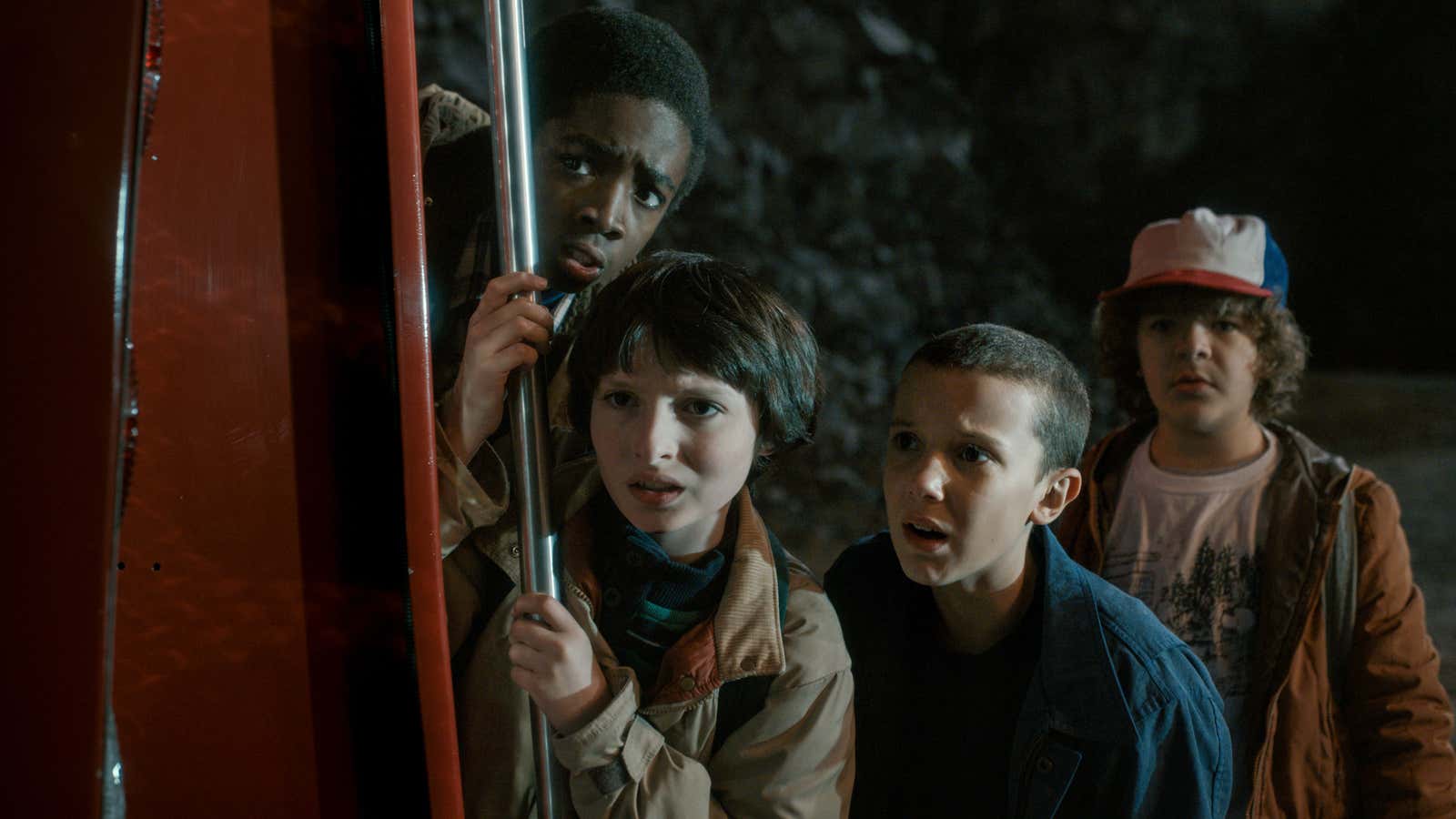Netflix doesn’t think like many of its TV-network competitors. The web-video giant doesn’t judge whether a show gets picked up or renewed purely on how many people watch it. Frankly, Netflix doesn’t even need a show to be a breakout hit in order to keep it on the air.
The Los Gatos, California-based streaming service—which plans to release 600 hours of original programming in 2016, up from 450 last year—isn’t trying to build up a library solely of ratings juggernauts. That would likely come with an even heftier price tag than Netflix is already shouldering for its existing original and licensed content, as well as its international expansion. Its goal, you might say, is even loftier—and more reflective of the fact that it’s a Silicon Valley tech company rather than a TV network.
To keep its 83 million monthly members around the world glued to the platform, Netflix aims to release something each individual subscriber will enjoy—every single month, David Wells, Netflix’s chief financial officer, said at Goldman Sachs’ Communacopia Conference last week.
That means carrying lots of shows across different genres, formats, and languages. Many are made with modest budgets—most of Netflix’s original movies, for example, aren’t big-budget projects, Wells said—and not all can be expected to garner the massive viewership of monster successes like this summer’s Stranger Things and Making a Murderer, which is now developing its second season. (Netflix doesn’t reveal how many people watch its top shows—apart from the number of episodes it takes to get viewers to watch through to the end—but buzz, reviews, and third-party viewing data suggest the shows were among Netflix’s most-watched.)
“We don’t necessarily have to have home runs,” said Wells. “We can also live with singles, doubles, and triples, definitely commensurate with their cost.”
Flaked, for example, a dramedy starring Will Arnett that’s set in Venice, California, wasn’t a breakout hit when it came out in March, and was met with mixed reviews from fans and critics. Vulture called it the ”hey, might as well” of TV shows after it was recently renewed for a second season.
A reception like that would normally kill a show running on broadcast or cable TV. But Netflix has more flexibility in terms of how it gauges success than legacy TV rivals that make the bulk of their revenue through advertising dollars, because Netflix’s business model is fundamentally different. The streaming app doesn’t run ads, and therefore is not beholden to marketers, which lean heavily on Nielsen TV ratings to decide where to bank their ad dollars. Its job is to keep subscribers coming back to the streaming app day after day, paying $9.99 or more per month for the privilege.
Wells noted that Netflix still has “a ways to go” in building up a diverse catalog. But it’s working toward it, all the while pushing its library toward 50% exclusive, original content and half licensed programming. It’s currently “one-third to halfway” to reaching that goal for originals, Wells said.
This is where Netflix’s treasure troves of user data comes in handy, Wells added. The data helps Netflix figure out which programs to put in front of each individual user in the hopes that they’ll enjoy them and watch them the full way through.
“The importance of the data isn’t necessarily in the production of the content,” Wells said. “It’s in matching you to content that you might enjoy watching … of putting those 10 shows that we could put in your visual range in front of you and having higher confidence that one of them or multiple of them are going to be something that you enjoy.”
